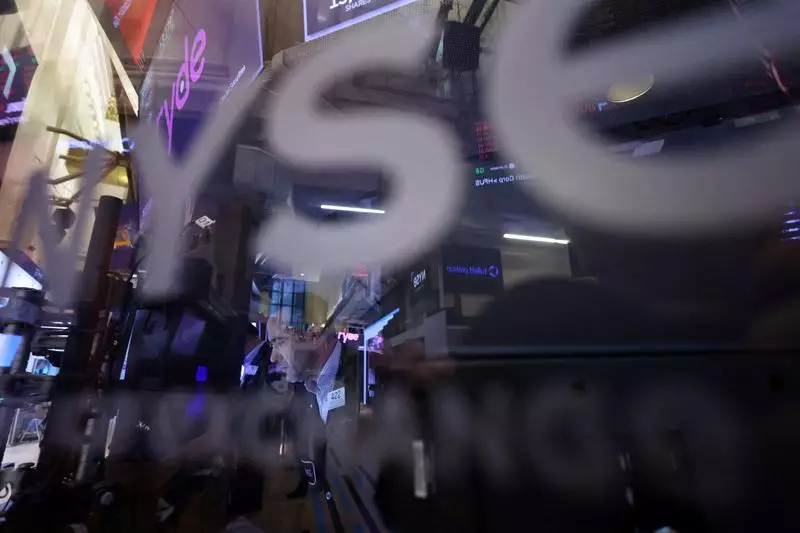In a notable turn of events, U.S. stock markets experienced substantial gains on Wednesday, energized by the release of consumer inflation data that indicated a more subdued inflation environment than many analysts had anticipated. The rising indices suggest that investors may be reassured about the prospect of laxer monetary policies in the near future.
The day began with the Dow Jones Industrial Average surging by 705 points, equating to a remarkable increase of 1.7%. Similarly, the S&P 500 and NASDAQ Composite also followed suit with gains of 98 points and 380 points, respectively, each reflecting an increase of around 1.7%. This robust response from the markets can largely be attributed to the consumer price index (CPI) data released which indicated a 0.4% month-on-month increase in December. This figure, while slightly above the previous month’s increase of 0.3%, was still tempered by a reduction in core inflation metrics, which are closely watched by investors.
The core CPI, which excludes volatile items such as food and energy, demonstrated a modest rise of just 0.2% for the month and 3.2% year-on-year. This was lower than the expectations of 0.3% and 3.3% that market analysts had anticipated. Prior to this development, the atmosphere was filled with anxiety concerning persistent inflation, especially following a robust employment report released in the previous week.
The market’s optimism was further complicated by the evolving political dynamics, particularly with the burgeoning administration of President-elect Donald Trump. His proposed tariffs, targeting both allies and adversaries, have intensified fears about potential inflationary pressures. Investors appear increasingly wary that these tariffs might further strain consumer prices, complicating the Federal Reserve’s effort to manage economic stability.
As of late, market predictions indicate that the Federal Reserve may adopt a more cautious approach to interest rate changes, expecting only two cuts in 2025. Such projections signal a more tempered perspective on the risk appetite of traders, suggesting a reluctance to embrace risk-heavy assets during uncertain times.
Amidst the overarching concerns regarding inflation and its impact on monetary policy, the corporate landscape provided rays of hope with several major banks reporting impressive quarterly earnings. Noteworthy results emerged from JPMorgan Chase, Goldman Sachs, and Wells Fargo, showcasing resilience even in a tumultuous economic environment. JPMorgan’s stock witnessed a 0.5% uptick after reporting record annual profits fueled by strong performance in investment activities during the fourth quarter.
Goldman Sachs exhibited an even more pronounced recovery with a staggering 5.5% increase in its stock price following a report indicating that its fourth-quarter profits had doubled, primarily thanks to strong trading results. Meanwhile, Wells Fargo experienced a surge of over 5% as it unveiled results that surpassed expectations, contributing to optimism surrounding investment banking revenues.
In the commodities sphere, oil prices also saw an upward trend, gaining ground alongside the favorable inflation data. By early afternoon, U.S. crude futures (WTI) rallied by 1.5%, reaching $77.50 per barrel, while Brent crude climbed 1.1% to $80.83 per barrel. These increases, complemented by a decline in U.S. crude stockpiles, suggest a response to the cooling inflation narrative which often bolsters demand expectations.
However, the market remains cautious as traders face ongoing uncertainties around Russian oil sanctions and their potential impact on global supplies. A recent forecast from the U.S. Energy Information Administration further complicates the outlook, predicting future pressures as oil supply might outpace demand over the next two years.
As the market digests this important inflation data and corporate earnings reports, it faces a complex tapestry of political and economic challenges. The interplay between calming inflation metrics, corporate success stories, and geopolitical tensions creates a landscape filled with both opportunity and concern. Investors will need to navigate this uncertainty carefully as they position themselves for what could be a pivotal year ahead. As the Federal Reserve’s actions unfold, the market’s trajectory will likely depend heavily on the dual forces of consumer sentiment and broader economic indicators.

